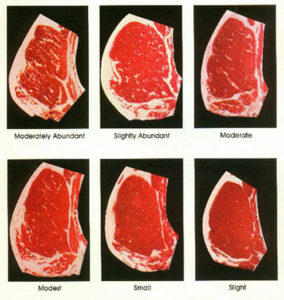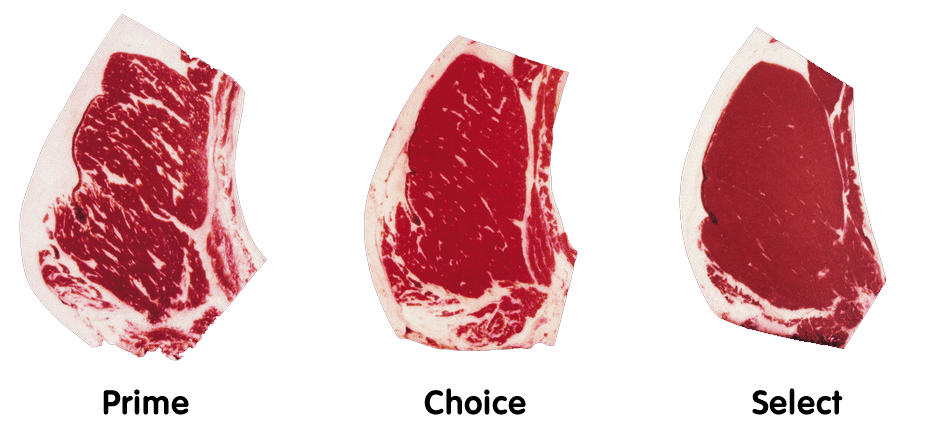When you order your steak at Grand Lux Café, you will likely ask about its grade – a measurement of its quality based on its eating characteristics, namely, flavor, tenderness, and juiciness.
Degree of Marbling
The primary determinant of the grade of the beef is its degree of marbling, which refers to the amount of intramuscular fat intermingling with the lean meat. In general, the greater the level of marbling, the juicier the bite and the better the flavor that, in turn, means the higher the grade. Of course, the higher the grade, the higher the price will be.
Keep in mind that each country has a different grading system with different labels, such as Choice and A4. You may even be confused as restaurants can mix and match the grades so you may want to ask for the equivalent in the US grading system.
 Grading System in the US
Grading System in the US
In the United States, the Department of Agriculture has the responsibility of grading beef for steaks. There are eight grades with the top five sold to consumers as cuts if beef while the last three are typically sold for canned meats and processed meats.
- USDA Prime Grade
This is the highest grade for beef with the meat characterized by a high degree of marbling with only 2% of beef actually making the grade annually. Fine dining restaurants and hotels usually get these rare cuts because of their expensive price.
- USDA Choice Grade
This is the second-highest grade with the meat having less flavor, marbling, and juiciness than a Prime Grade beef. But when it’s prepared well by a professional chef, you will find that it still has great food quality.
- USDA Select Grade
The meat usually has slight marbling but with mostly lean meat, which means that it can taste dry and be tough to chew when prepared improperly. You will find that it is served with sauce or gravy to make it more flavorful and tender.
Other grades are Standard and Commercial for consumer use as well as Utility, Cutter, and Canner grades for the food manufacturing industry.
